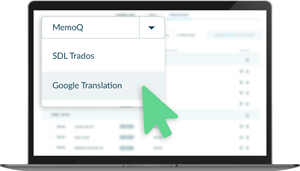Xillio Debuts Localization Hub for Seamless Translation Workflow
It is definitely an exciting time for the translation industry! At the GALA Global Conference, Xillio debuts its Localization Hub for seamless translation workflow. Xillio is a provider of content migration and integration software, and its new  Localization Hub offers language service providers (LSPs), language departments, and technology organizations a cost-effective solution to streamline processes and gain a competitive advantage in the industry.
Localization Hub offers language service providers (LSPs), language departments, and technology organizations a cost-effective solution to streamline processes and gain a competitive advantage in the industry.
There are a large number of various systems and mechanisms, each with a dedicated purpose and working separately from one another. This splintered technology landscape makes it difficult to provide an end-to-end experience for translation, and LSPs often end up with multiple tools because their clients request a different translation management system (TMS) and have different content sources for their projects. Xillio comments that their new solution will eliminate the need to build custom solutions each time and provides the flexibility to use the tools you want. With a user-friendly and intuitive application, the Localization Hub enables seamless integration between all content source systems and translation technologies.
I was able to connect with Rikkert Engels, CEO of Xillio, and he explained the reasons behind the need for the Localization Hub along with a discussion of the main benefits the application provides. I also asked him about his thoughts on how the future of the translation industry will be affected.
Could you explain why Xillio decided to build the Hub application for the localization industry?
“The localization industry suffers from a technological fragmentation. There are various, highly specialized tools available on the market, and they serve multiple purposes. Just to give a couple of examples, there are translation management systems, computer-assisted translation tools, and machine translation engines. Surprisingly, they work independently from each other, and what’s even more surprising, independently from the content source systems.
From the perspective of a content-focused company, with 15 years of experience in connecting content source systems, it was clear for us that such a connection is missing and crucial for a seamless translation workflow. All tools tend to work in silos, and in order to provide an end-to-end translation workflow, companies need to rely on custom development, on one-to-one connections, which tend to break and are costly to maintain.”
What are the primary benefits users are going to get from using the Localization Hub?
“The Localization Hub connects any content source systems with any translation tool and provides a simple and user-friendly interface and an easy to use application. By using LocHub, you can streamline your translation workflow.
If you work with the localization department of a large multinational enterprise, there is a great need for professional translations of press ads, websites, radio scripts, posters, sales brochures, DM, and many more promotional materials into the native language of your clients. All of these communications are locked in their own content management system. The translation management system (TMS) you have chosen to do the job may not offer you the connectors needed. Therefore, we see that users in the translation workflow need to do a lot of manual steps. Copying text from a CMS, downloading files, uploading files, sending them off for translation in emails. These are all steps of the process that can be eliminated if you use Localization Hub.”
Looking into the future, what do you think will be the most prominent trends and technologies to disrupt the translation industry?
“The biggest trends are automation and intelligence. New technology is entering the industry with the first adoptions of AI, and NMT. We are convinced these technologies, should be used in the workflow based on connectivity, and with access to source content, translation and the performance indicators.”
Rikkert also went on to mention that, “the localization industry is not the only one that can benefit from using the Localization Hub. This solution has a potential to go beyond localization needs and be applied to help organizations create better-personalized content at scale, and as such, a better user experience.”
How the Localization Hub Works

Navigate all your projects and translations in one place - A quick overview of all of your projects in a clear dashboard. Filter your projects by clients, status and more.

Choose translation files from your favorite content source - Easily pick files from the connected applications, or upload from your computer.

Select your translation tools and settings - Send your files directly to the translation tool of your choice.

Check progress & upload finished translations - Navigate through your files and control the workflow at any given stage.
Ending Notes
“The Localization Hub has been built with the sole purpose of streamlining integrations and upgrade the translation workflow to the current time.”, said Rikkert. He added, “Because it is purely a hub and not providing translations or other translation tools, it can offer an independent solution that benefits more constituents.”
The principal purpose of the tool is to help LSPs, translation departments, and technology providers by solving connectivity challenges by integrating with a wide range of tools which allows a seamless workflow. The Xillio Localization Hub currently supports 22 content source systems and integrates with the main translation management tools, and their list of both connectors and integrations continues to grow. If you would like more information, please contact us at CMSC Media, and we would be happy to help connect you!

Natalie Evans
Natalie Evans has over 16-years in the tech industry and currently works as the event coordinator and tech reporter for CMS-Connected, keeping up-to-date on what's happening in and around the Content Management industry.